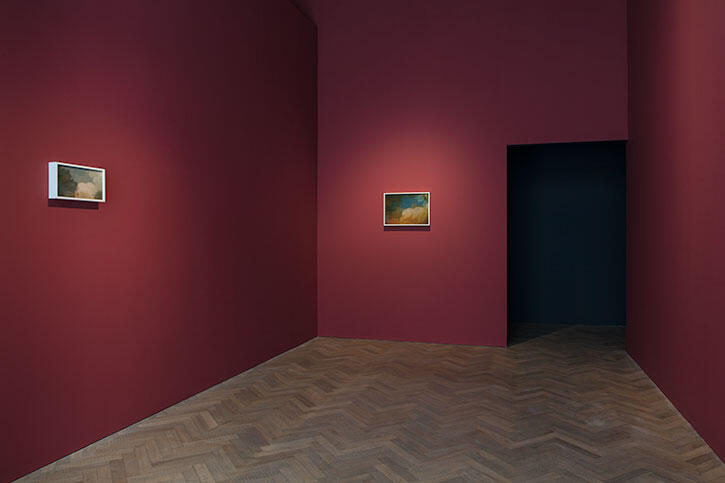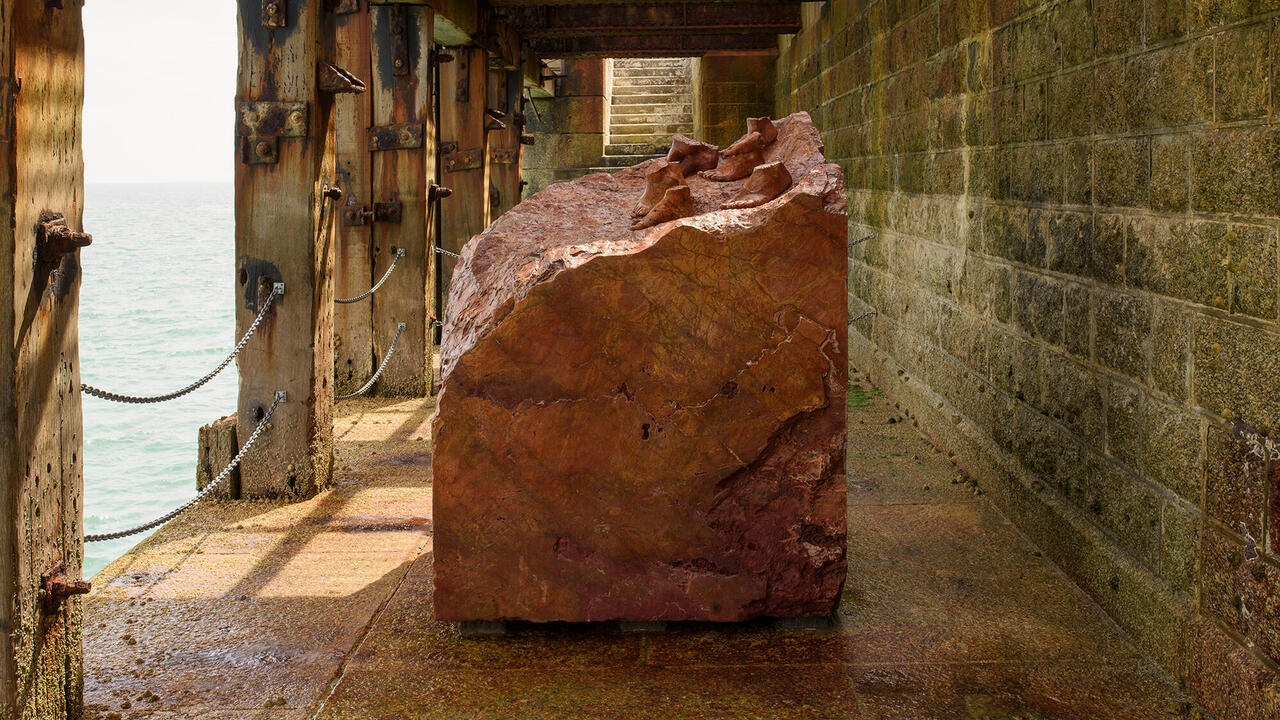Amie Siegel Scrutinizes Aristocratic Estates
At Thomas Dane Gallery, London, the artist explores how class domination is maintained through the conservation of objects
At Thomas Dane Gallery, London, the artist explores how class domination is maintained through the conservation of objects

Is it possible to make a film in which objects are the subject of every shot? Not a film revolving around Alfred Hitchcock’s famous MacGuffin (a false object, in fact) but a film in which common, cultural objects, drive the narrative? Many films have skirted this counterintuitive project – Michael Haneke’s The Seventh Continent (1989), Chantal Akerman’s early work – but the installations of artist Amie Siegel have perhaps gone the farthest. In more than two decades of filmmaking, Siegel has documented the circulation of modernist furniture (Provenance, 2013); the afterlives of an Italian villa (Genealogies, 2016); and the cleaning of Sigmund Freud’s antiquities (Fetish, 2016). Her most recent installation, Bloodlines (2022), continues this filmography with a different cast of things. Commissioned by the National Galleries of Scotland, Bloodlines takes as its ostensible subject an exhibition of paintings by the 18th-century portraitist and equine artist, George Stubbs.

Though the Stubbs exhibition is the film’s catalyst, Bloodlines spends most of its 82 minutes in the country estates of the paintings’ aristocratic owners. These estates are enormous places, with hulking stone buildings and green grounds stretching to the horizon. The first estate we see seems abandoned to its objects: porcelain vases, gilded frames, elaborately patterned wallpaper, fake bookcases with concealed doors, chiming clocks, fireplaces and paintings hung in complex, salon-style arrangements. Some of the paintings are by Stubbs – portraits of the family’s ancestors posed at home or on horseback, surrounded by pets. Animals are everywhere, mostly domesticated and as decoration, sometimes as prey.
For the remainder of the film, people occasionally enter the frame to buff, clean, scrutinize and transport the objects. Like all good fetishes, the objects appear to move the people. We glimpse staff attempting to scrub these estates clean of the inevitable decay. The owners, whomever they might be, are not filmed or named; the usual location credits are likewise omitted. The effect is the creation of a sole, strangely generic super-estate.

The plot, as such, begins with the appearance of the art handlers. Their work sends Bloodlines into circular motion, following the paintings from the estates to the show and back. The Stubbs exhibition, when it opens, is less climax, more empty centre. We see the now-familiar works finally installed together, but the scene is a pause before the paintings are returned.
Bloodlines is as hushed as its interiors. There are no voice-overs, interviews, monologues. The film’s few conversations are overheard: art handlers (‘Up, down, okay, got it on your side?’); a portrait photographer (‘Great, that’s beautiful, find that light …’). Even an exhibition tour guide is barely audible. There is one burst of soundtrack in the film – a brief scene where an organist plays his instrument, but he stops after only a minute or two.

Siegel, from Chicago, is an outsider to this world of privilege. Despite her foreignness, her camera does not sensationalize, nor does it produce a sense of ressentiment. Bloodlines uses precise framing, deft cutting and the subtle layering of sound to construct its critique. And what is that critique? Like Stubbs, Siegel is a portraitist of power but, unlike him, she is not power’s attendant. By painting aristocrats and their pets, Stubbs gave continuity to class domination. Bloodlines shows continuity is maintained through the conservation of objects, their exhibition, circulation and inheritance. Cumulatively, the result is timelessness – a timelessness that is, of course, an illusion. Siegel shows its cracks in the peeling of wallpaper or in a curtain’s frayed edge. This is all untenable, the film says; this will all come crashing down.
Amie Siegel’s ‘Bloodlines’ is at Thomas Dane Gallery, London, until 23 July 2022.
Main image: Amie Siegel, Bloodlines, 2022, 4K colour video, sound, exhibition view. Courtesy: © Amie Siegel, Thomas Dane Gallery, London; photograph: Richard Ivey






















